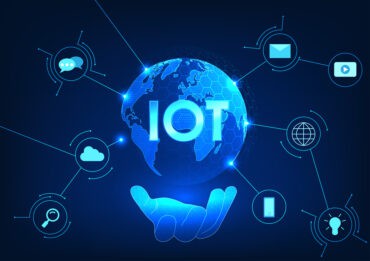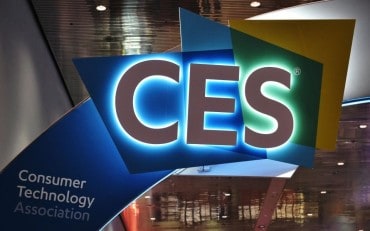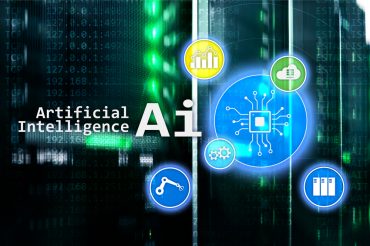
As things return to normal, IoT strategies could give physical stores a boost, allowing retailers to enhance the experience for their customers.
Retail bet big on the internet of things. A past survey from PWC showed that more retail companies initiated IoT adoption than other industries, and a whopping 94% of retail respondents believed IoT benefits outweighed the risk. That was before the pandemic. How is it going now? Surprisingly well. IoT is seen as an in-store differentiator to enhance a customer’s retail experience.
From facial recognition to sensor detection
Brick and mortar retail lagged behind eCommerce in collecting data because there was a glaring omission. Internet retailers could watch the behavior of customers throughout their shopping experience, not just at the point of sale. In a brick and mortar location, that’s much harder to do.
One solution could have been video monitoring using facial recognition to track shoppers’ movements throughout the store. However, surveys reveal deep concerns from the public over the use of facial recognition software from anyone but law enforcement. Although some point to the benefits of facial recognition, it can be a worrisome trend to adopt outright.
See also: Smart Shopping Carts Latest Tech for Shop and Go Experience
Enter the sensor. IoT makes it possible to track not shoppers but the activity around items in the store. As shoppers interact with these sensors — from just picking up items and then putting them back to scanning items for deep-level information — stores can gather greater intelligence on products in a physical location.
These sensors work through RFID tags, the same technology allowing supply chain and operations to manage inventory. Kroger, for example, installed smart shelves that not only send sensor information about inventory but interacted with shoppers’ grocery lists — lighting up when shoppers were nearby a list item, for example.

Arming employees with better data
It’s not just central operations that benefit from better data. Real-time data also helps frontline employees manage the return to casual shopping and could improve future responses to disruption.
At an H&M location in Berlin, employees received bracelets notifying them of dressing room requests, visual merchandising instructions, or on the fly promotional updates. This could also provide employees the data required to make the seamless transition from online activity to physical shopping easier for customers.
With personalization on the rise, this type of data distribution could improve the relationship stores have with their customers. It’s a method for creating a customized experience for new customers and nurturing relationships with returning ones.
Improving the contactless retail experience
Reducing customer frustration at the checkout line is a strong priority for stores. IoT is improving on existing strategies to reduce clogs at the checkout and to ensure customers feel comfortable post-pandemic.
For one, IoT allows customers to checkout anywhere in the store. Target experimented with this by creating a point of sale attached to a handheld device. Employees that notice long lines can check out customers from anywhere in the store to ease the bottleneck.
It could also improve experiences with online shopping-store pickup connections. Customers could shop and park to pick up as usual but be able to add on last-minute items and checkout with an employee handheld device right from the car.
Reducing loss
Retail operates on thin margins, and post-pandemic, those margins further shrank. IoT sensors provide not just a wealth of information about shopping habits but could alert employees to misplaced items, inventory gaps, and even track down shoplifters.
For large stores, this capability is a revelation. The location of missing inventory — whether misplaced, mislabeled, or lost in the back — improves the overall shopping experience. Something marked “in stock” online but missing in the store could be tracked down through RFID tagging, computer vision, and image recognition.
Added to existing supply chain solutions creates a comprehensive end-to-end picture of products. Customers experience less disappointment or frustration with out-of-stock items, and stores can manage inventory down to the granular level.
The addition of intelligent edge for 2021 operations enables real-time data capture without the processing load. Combining data from edge devices and traditional data helps reduce the gaps from theft or mistakes.
Customer empowerment
As customers care more about where their goods come from, IoT assists in transparency and knowledge management. Consumers can scan labels to see the journey of their products right in the store.
Customers are more connected, and retailers understand that they’re using the internet to make smarter purchase decisions. They’re able to take advantage of store promotions and expect a level of service based on their loyalty and frequency.
Retail increasingly uses IoT to target customers with relevant promotions and announcements. These sensors provide location-based services or real-time price adjustments based on a number of data factors.
In the case of customer service, previous analysis efforts were expensive and intrusive. They included surveys and elaborate follow up. Now, sensors and wifi traffic monitors provide data based on customer movements throughout the store. Organizations can make adjustments and create a better customer experience.
IoT adoption won’t slow down
Retail can leverage IoT to continue to close the gap that 2020 left. With tools such as edge computing, computer vision, and real-time analytics, brick-and-mortar stores could see a renaissance in customer experience.
It will be necessary for retail stores to leverage IoT to compete with the customer experience created online. As retail moves towards digital transformation, it will be the continued investment in IoT strategies that differentiate and contribute to long-term success.
It’s been several years since retail IoT found its way onto the hype cycle, but retail’s interest hasn’t slowed down. As everyone returns to normal operations, these IoT strategies could give physical stores a boost, allowing stores to enhance the retail experience. As long as retail organizations follow through and don’t abandon these initiatives in the absence of a crisis, IoT will continue to be a transformative force.







